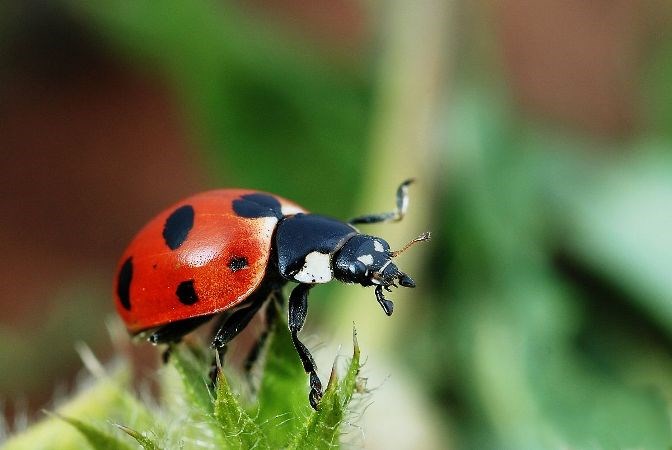The balance of nature is achieved when all that is part of the environment is in balance. The upper and lower limits of populations are mitigated by a complex combination of factors that affect populations. However, there really are never constant numbers of anything, but an infinite struggle between all factors.
When you introduce a biological control to reduce the numbers of a pest population it is essentially introducing something that is a natural pest in order to take control of the pest population. Last week the focus was biological fly control. In that case you introduce a parasitic wasp, which effectively breaks up the lifecycle of many species of pest flies and thus reduces the population of the troublesome pest. The parasitic wasps who ultimately reduce the fly population by laying eggs in the pupating fly, consume the contents of the pupating fly and then the parasitic wasps complete their life cycle. The only focus in the short lives of these efficient biologicals is no different than any other part of our natural world where the focus is on reproduction and survival of the species. Any given species in a community lives at the expense of others that are attacked and fed upon. However, this balance is never retained at one level, because of the constant battle for balance in the natural world.
Life is not a straight line but a series of ever undulating ebbs and flows that make up life.
Biological control of insects is generally the introduction of a predator, parasite, parasitoid or pathogen into the environment, which then impacts the population of the pest of focus. They do not kill off the entire population of the pest but create an ecological dynamic that keeps that pest population at a minimum.
Biological controls are effective, environmentally friendly and, to a point, self sustaining. For example, if you have an aphid problem you could introduce lady bugs to control that population, but keep in mind if you are not in control of the environment it will be difficult to manage the success of the introduced control. For example, if you are growing culinary herbs in a controlled environment like a greenhouse, the introduction of ladybugs might be a good choice. However, if you are trying to control aphids in the maple trees in your outdoor space, the introduction of a biological control will likely not be effective, as your ladybugs might easily migrate to your neighbour’s tree and forget all about the aphids in your maple tree as there is no easy way to control the outdoor environment in an open space.
Insects are found in all environments in our world, except for very high altitude frozen polar environments and in the immediate vicinity of active volcanoes. Insects make up more than half of all the living things on Earth and have the ability to evolve quickly and increase their numbers rapidly, which aids in their survival over the long term. Hence, controlling an insect pest that may be costing you significant economic loss is no easy task.
Using a natural control regulates the numbers, preventing the population from becoming too high. It also will require periodic increases in numbers of the biological that is controlling the pest population creating that undulating balance of nature.
In order to achieve the best control balance, it is important to use a variety of mechanisms in which to gain the desired control of the pest population. Learning all that you can about the life cycle of the pest in key to choosing the safest and most effective control to be used at the appropriate time is the best practice.
Hanbidge is the lead horticulturist with Orchid Horticulture. Find us at www.orchidhort.com; by email at info@orchidhort.com; on facebook @orchidhort and on instagram at #orchidhort.



